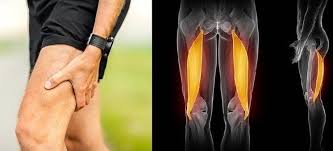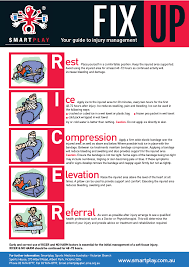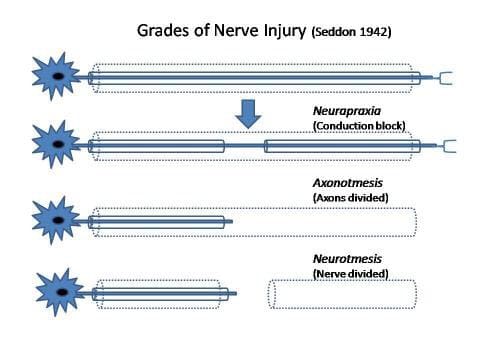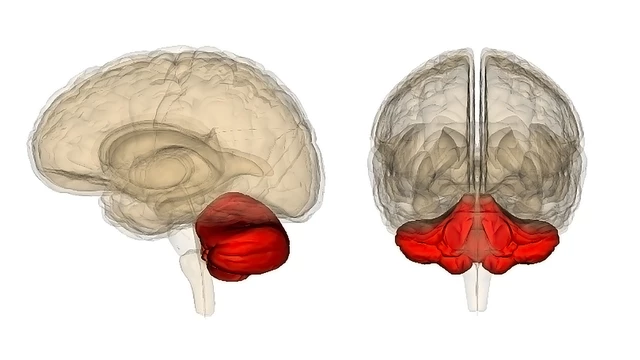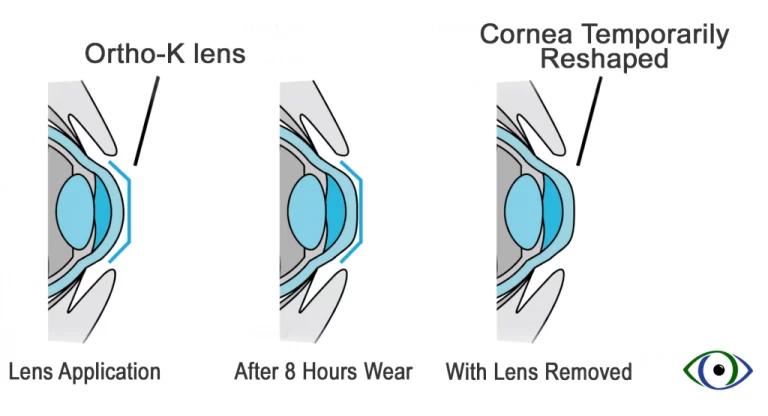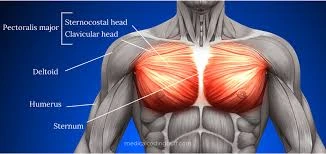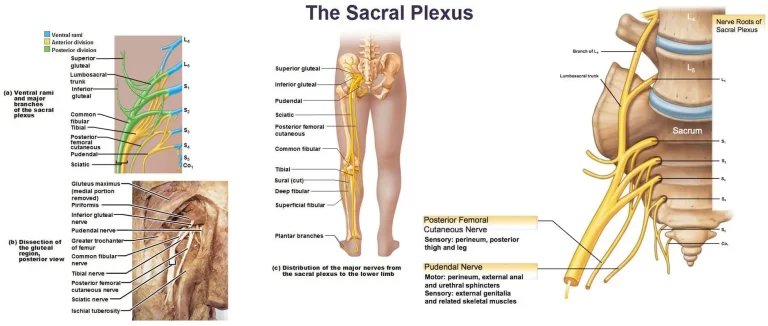How to Heal Hamstring Injury Fast
Introduction
The best way to heal a hamstring injury fast is to combine rest, appropriate care, and gradual rehabilitation. Doctors will examine practical methods and approaches to help hamstring injuries heal quickly and securely. they will give you the information and resources you need to encourage healing, lessen pain, and avoid re-injury from the first course of therapy to the exercises included in rehabilitation.
Hamstring injury is extremely common, In athletics, hamstring strains are the most frequent type of injury. A distressing 37 percent of all muscle injuries in professional sports are hamstring strains showing that the hamstrings are a key muscle group in all forms of locomotion, this should not be surprising. The hamstrings and other major lower body muscles are used extensively when jumping, jogging, sprinting, or even just getting out of a chair.
Three muscles make up the hamstring group: the biceps femoris, semitendinosus, and semimembranosus. The rear of your thigh is home to this particular muscle group. They begin at the base of the pelvis and extend to the lower leg, passing over the knee. These muscles traverse the tibiofemoral joint (knee) and the glenohumeral joint (hip), making them two joint muscles. The hamstrings are liable for knee flexion and hip extension. If you overstretch or overload these muscles, you run the risk of injury. They are therefore more vulnerable to stress.
Grades of Hamstring injury
Three stages of Hamstring injuries exist.
- grade 1: A muscle or tendon that is overstretched. Very few muscle fibers are involved in this grade. It is typical for pain and soreness to start the day following an injury. slight pull or tension of the muscles, A sharp, burning suffering shooting through your thigh. You won’t lose strength, but your leg will be difficult to move.
- grade 2: A partial thickness tear involving half of the muscle fibers is called a grade 2. Acute (early on) swelling and pain accompany this grade. a partial tear in the muscle, worse than in grade 1. It’s possible that you have some bruises and that your leg is weaker.
- grade 3:A full-thickness tear, sometimes known as a complete tear grade 3. This rating indicates a complete tear, which may happen in several places. It could be found at the belly of the muscle, involving every fiber. or where the tendon entirely separates from the muscle at the muscle-tendon junction. Muscle strains of grade three cause sudden, severe pain, edema, and loss of function. Take note that surgery would be necessary for this grade. If you are experiencing a grade 3 tear, do not attempt the following program. whole muscle incision, with increased bruising, swelling, torture, and soreness. Perhaps there was a popping sound when the injury occurred.
Other signs and symptoms include in grades of injury: knot or bump in your thigh region, convulsions, and tightness in the muscles, particularly after cooling down. The severity of the injury affects how long it takes to heal. While a grade 3 injury may require surgery or take much longer to heal, a simple grade 1 injury can heal in a few days. If the tendon is retracted and the tear is close to your buttock, surgery can be necessary.
Possible reasons for injury in the Hamstrings
The majority of hamstring injuries result from physical or athletic exercise. If you have one, you probably have a clear idea of when and how it occurred. The following are some possible causes of hamstring strains:
- Play football, basketball, tennis, and soccer.
- Are those who run imbalances in muscles: Since the hamstrings and quadriceps are a force couple, they cooperate to perform knee movements. Because of this, the other muscle group will compensate for the weakness in the first. There could be harm from this. Examining the muscles of the posterior kinetic chain, which includes the calves, hamstrings, glutes, and lumbar spine, is also crucial.
- Sprinting without a proper warmup
- Sudden stops from sprints
- Overuse or exhaustion: experiencing an exercise regimen that the learner was not gradually introduced to.
- inadequate pre-exercise warm-up regimen
- Muscle imbalances: The hamstrings and quadriceps cooperate to perform knee movements because they are a force pair. Because of this, the other muscle group will compensate for the weakness in the first. There could be harm from this. Examining the muscles of the posterior kinetic chain, which includes the calves, hamstrings, glutes, and lumbar spine, is also crucial.
- There are several ways that hamstring injuries can happen, but overstretching is the most typical one.
Additional explanations are as follows: a strike to your thigh straight, a program for preconditioning is inadequate, prior hamstring strain.
What to predict
Following a hamstring strain, symptoms such as swelling, pain, sudden, acute pain, a tearing sensation, bruises, and pain are to be expected. It could hurt to walk. Complete weight bearing on your leg may be challenging if you have a severe hamstring strain.
For your hamstring muscles to heal, you might require: crutches if your leg is incapable of supporting any weight-unique bandage (compression bandage) encircling your thigh
For a grade 1 injury, symptoms including pain may last for two to five days. For grades 2 or 3, up to a few weeks or a month
If there is extensive bruising if the injury is very near the knee or buttock, It can imply that the hamstring was torn loose from the bone. Most likely, a sports medicine or orthopedic physician will be referred to you. To repair the hamstring tendon, you could need surgery.
Diagnoses and examinations for healing hamstring injury
Based on the symptoms, your healthcare professional might be able to diagnose your hamstring injury. In addition to measuring your hamstring’s pain, they might look at the bruises and edema there. Our main healthcare provider can diagnose a hamstring injury, discuss treatment options with you, and advise when it is safe to resume normal activities. They may occasionally order an MRI. If you require additional assistance, they may also recommend that you see a physiotherapist, sports medicine expert, or orthopedic (bone) healthcare provider.
Relieving Symptoms of a hamstring injury
For the first several days or weeks following your minor hamstring injury, adhere to these instructions:
- Rest: Give your hamstring muscles a rest so that the injured tissues can heal. Steer clear of any action that makes you ill or swollen. Your doctor might advise using crutches to take your weight off the damaged leg if you have more than a mild muscular strain.
- Ice: As soon as you can after the injury, apply ice to the region. When you are awake, apply an ice pack to the wounded area for 15 to 20 minutes every two to three hours throughout the initial days following the incident. Swelling and pain are reduced by cold. It could also lessen bleeding in the event of a tear. If you suffer from diabetes, vascular disease, or lack sensation in your leg, consult your healthcare professional before applying ice.
- compression: Apply an elastic bandage on your leg and wait for the swelling to subside. Take care not to wrap excessively tightly. Starting from the end furthest away from your heart, wrap. If the region starts to hurt more, gets numb, or swells beneath the bandaged area, remove the bandage.
- An elevation: When you’re relaxing, elevate your leg and sit or lie back. Lift your leg above your heart, if at all feasible.
You should bring acetaminophen (Tylenol), naproxen (Aleve, Naprosyn), or ibuprofen (Advil, Motrin) for pain. These painkillers are available at the pharmacy. When a few days have passed, gradually start using the wounded limb. With time, your leg’s capacity to bear your weight and its pain tolerance should improve.
If you have hyper blood pressure, kidney illness, heart disease, stomach ulcers, or internal bleeding in the past, appoint a doctor before utilizing these pills.
Never take more than the recommended amount by the manufacturer or your doctor.
Management of healing hamstring injury
Although physical therapy may also be necessary for certain people, you can manage your hamstring strain at home. Following the advice of your healthcare provider and attempting to reduce pain and swelling is the primary objective of treatment.
A medical professional must indicate the following:
- Give yourself a vacation from demanding activities so that the injury can recover.
- Utilize cooling packs multiple times daily to alleviate pain and minimize edema.
- To reduce swelling, cover the damaged region with a compression bandage or put on compression shorts.
- If at all achievable, raise the leg while you rest above the level of your heart to reduce swelling.
At-home cures
- R.I.C.E., which stands for Rest, Ice, elevation, compression
- Until the soreness goes away, stop what you’re doing, or at least cut down on what you’re doing.
- After your injury, apply ice to the region for 24 to 48 hours. After 15 minutes of keeping the ice on, remove it and repeat the process.
- Make use of an elastic thigh sleeve or compression wrap. Wear it whenever you don’t have a shower or ice.
- To keep your range of motion flexible, use mild workouts.
- With your damaged leg dangling off, sit on a table. When your leg is cooling off, gently elevate and lower it. Once your leg has cooled, lie on your stomach in a prone posture and keep gently bending and straightening it.
- utilize over-the-counter medications, such as tablets, gels, and/or creams.
- If walking is too uncomfortable, use crutches.
Physical therapy
You can learn how to perform mild hamstring stretching, flexibility, and strengthening exercises from a physical therapist. Your healthcare professional can demonstrate how to perform exercises to increase your strength once the pain and swelling have subsided. You will receive a comprehensive treatment plan for a hamstring strain if you attend physical therapy, which may involve manual therapy, therapeutic exercise, therapeutic activity, and modalities. The physical therapist will go over this strategy with you during your first evaluation in your first session. Every therapy program is customized for the patient.
Modalities include ice, electrical stimulation, heat, and ultrasound. Ice would aid in diminishing edema and pain during earlier days of injury. Electrical stimulation would help with pain relief. A moist hot pack would be valuable in the later days of healing to boost blood circulation, reduce pain, lessen muscle spasms, and enhance soft tissue mobility. Ultrasound is advantageous in enhancing circulation near the injured muscle fibers.
Functional activities including bending, lifting, and squatting are included in therapeutic activities. To increase functional mobility, this will include more energetic activities. To guarantee that the patient is completing activities with the appropriate form, speed, muscle activation, posture, body mechanics, and lifting techniques, patient education will be integrated into therapeutic activities. This contributes to the reduction of reinjury.
Ice, heat, electrical stimulation, and ultrasound are examples of modalities. Ice would help in the early stages of injury recovery by reducing pain and swelling. To help with pain reduction, electrical stimulation could be used. Later in the healing process, a moist heat pack might help to promote soft tissue mobility, reduce pain, lessen muscular spasms, and increase blood circulation. The area around damaged muscle fibers can benefit from improved circulation thanks to ultrasound.
Rehabilitative exercise is an essential part of the process. Exercise encourages more blood flow to the injured area, which speeds up the healing process. Strength, muscle flexibility and extensibility, joint stability, proprioception, balance, and endurance are all enhanced by exercise. workout has the added advantage of terminating endorphins, which improve mood. Additionally, it encourages deeper sleep, which aids in healing.
To alleviate musculoskeletal pain, manual therapy is a hands-on procedure by a physical therapist or physical therapy assistant. For a hamstring injury, modest manual therapy will be used at first to promote recovery and minimize swelling. After the acute period, manual therapy may include stretching, instrument-assisted methods, and some intense friction massage to break up any scar tissue.
Exercises for healing hamstring injury
Lying hamstring stretch using a strap
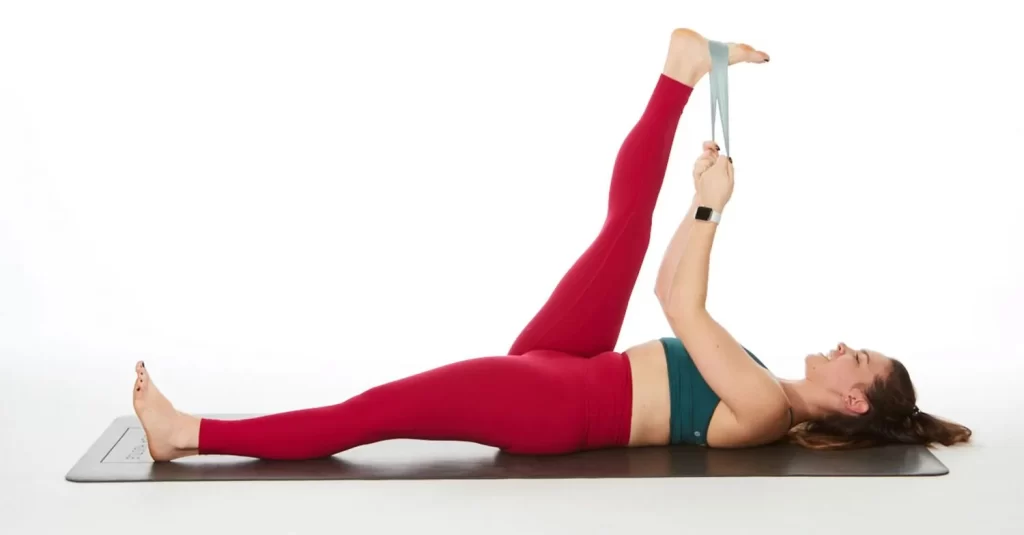
Lie with the back on the ground or on a mat with the legs extended out.
To stretch the right leg, flex the right leg and set the theraband across the sole of the right foot.
Hold the strap in both hands.
Hold the left leg lengthened on the ground with the foot flexed. This should force the thigh and calf toward the floor.
Gradually extend the right leg with the foot bent. The right leg should be straightforward with a slight bend in the knee. The base of the foot should face the ceiling.
Gently stretch the strap til there is a minor tension in the hamstrings.
Hold the stretch for 10–30 seconds.
Switch legs. Repeat 2–4 times on each leg.
Supine hamstring stretches with hand
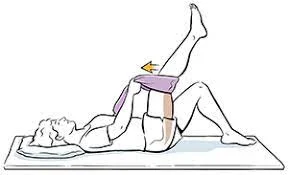
This hamstring stretch will give your hamstrings a moderate stretch. This one might have appeared in a number of our previous postings. Although there are other methods for hamstring stretches, this is our top choice for healing. Unlike a seated hamstring stretch, which can be too forceful at first, lying on the back allows for a moderate stretch with no load. With this one, use your discretion.
To do this exercise: Place a pad underneath your back to provide some cushioning throughout the stretch.
Lay on back on the mat or the floor, straight forward both of your legs. If bending both knees with your feet flat on the floor seems more comfortable
Elevate one leg off the floor.
Using your hands behind your thigh but behind the knee, slightly pull your knee toward your chest until you feel a minor stretch.
The stretch shouldn’t hurt. Preserve the stretch for 30 seconds, then move your legs forward and backward. Repeat twice on the individual side.
Note: It shouldn’t hurt to stretch. You are pushing yourself too hard in the stretch if it hurts. Healing is a procedure. Knowing that you can improve on what you can accomplish now and knowing that you can do more in the future is preferable.
Dynamic hamstring floor exercise
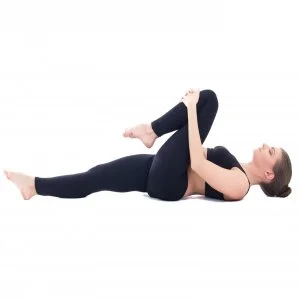
How to behave: While resting on your back, spread your legs wide.
It is appropriate to bend the left knee toward the chest. Put both hands behind your leg, encircling it with your left hand.
Bring your left leg towards you while maintaining a straight line of sight and a calm upper body. Try to get your knee stacked over your hip; there’s no need to pull extremely hard.
Straighten your left leg while pointing your foot toward the ceiling. Next, knowingly and rhythmically flex your leg back to alleviate tension. Just straighten as far as feels comfortable if you are unable to do so.
Continue this bending and straightening for a duration of one to two minutes. putting things right.
Hamstring Curls in Prone
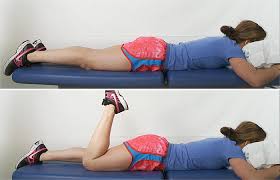
Procedure: Begin in the prone position (on your stomach) on a mat. Secure a band resistance or cable cuff around one ankle, making sure that the anchor or resistance point is away from your body. Position your feet hip-width apart. To stiffen your torso and stabilize your spine, gently engage your core and abdominal muscles (also known as “bracing”). Throughout the exercise, maintain a slight dorsiflexion of the ankle, pointing the toes towards the shinbone.
Curling Movement: After exhaling, curl or bend your knee, raising your hips off the mat or curving your lower back. Keep your heel towards your buttock without moving your thigh. Continue bending your knee until your heels come in contact with your buttocks or until you are as comfortable as possible. You know you’ve hit the limit of movement in your joints when you start to feel movement in your hips or lower back.
Motion Downward: Breathe in and slowly raise your leg back to the beginning position.
Exercise Modification: You can increase the resistance in the cable or band or your range of motion by bringing your heel closer to your buttock to intensify this workout.
During this exercise, there’s typically an inclination to lift the hips forward or extend the lower back, which raises the lower back arch. Engaging (lightly flexing) your abdominal muscles can assist avoid low back hyperextension and hip hiking.
Raise your knees straight
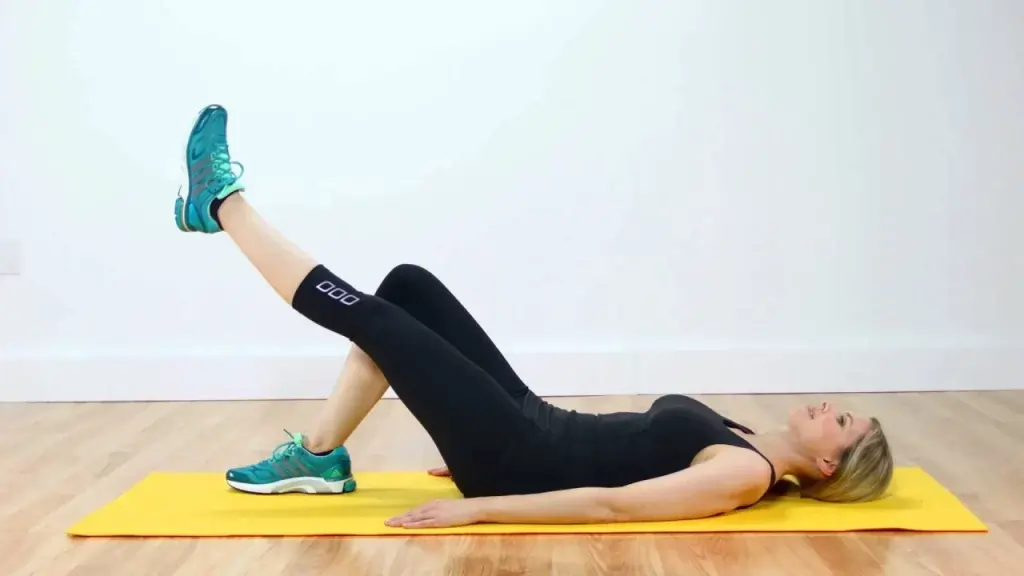
All you need is a room big enough to lay flat on your back without any particular equipment to perform a straight leg lift. The exercise takes about five minutes from start to finish, and it’s often done three or four times a day along with complementing activities.
Performing the straight-leg lift on a carpeted floor is generally preferable to doing it on a soft bed. Your hips can become twisted or sink instead of staying in a neutral position on soft surfaces.
Procedure: Lie on your back with your hips squared and your legs comfortably spread out on the floor to begin the straight leg raise.
Plant your foot flat and bend the knee of your non-injured leg to a 90-degree angle on the floor.
Contracting your quadriceps, or the group of muscles on the front of your thigh, will help stabilize the muscles on your straight leg.
Take a calm breath and raise the straight leg six inches off the floor.
For three seconds, hold.
With a controlled expiration, drop the leg to the floor.
Unwind and repeat ten more times.
When executed appropriately, the whole activity will generate tension in your hips, thighs, and abdomen.
Modifications: You can increase the difficulty of the straight leg lift by loading your leg with a tiny cuff weight. As you gain strength, gradually reduce the weight from your thigh to your ankle. This lessens the torque on your hips and knees, preventing injuries to them. Your physical therapist can assist in figuring out the weight for you
Prone elevates the legs straight
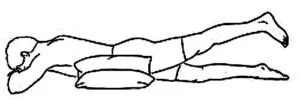
To begin the prone SLR practice, first choose a comfortable, clutter-free spot to lie down on the ground, lying face down, or prone.
Maintaining the engagement of your abdominal muscles, gently tighten your core muscles. While performing this, your breathing should remain unhindered.
slightly lift one leg backward while keeping your knees straight and your abdominals tight. As your leg elevates off the ground, preserve a straight knee.
After two seconds of holding your leg straight up in the air, carefully drop it back to the ground. When raising your leg, take care not to spin your pelvis or back.
after ten to fifteen slow repetitions, go to the other leg and continue the exercise.
Prone SLR Exercise advice and adjustments: When performing the prone SLR as part of a lower back rehab exercise routine, some persons choose to alternate their leg-raising motions. There’s a chance that doing the workout will make your lower back pain slightly worse. Stop doing the activity and consult your doctor or physical therapist if it results in an abrupt or severe worsening of your hip, leg, or lower back pain. You can do this exercise once or twice a day, but it’s a good idea to ask your physical therapist how often it is appropriate for your problem.
Another way to make the prone SLR more difficult is to increase the resistance by strapping a one- or two-pound cuff weight around your ankle. For added resistance and difficulty when performing prone leg lifts, consider using a resistance band, like a Theraband. Try practicing the prone SLR while on all fours, such as in a crawling position, for an even more difficult development. The difficulty will rise even further if leg lifts are performed while in a plank position.
Primary muscles contracted: hamstrings and gluteus maximus
Your posterior thighs and buttocks should feel challenged during this exercise.
Equipment needed: As the exercise becomes easier, add an ankle weight to gradually increase the resistance. As you gradually increase the resistance, begin with a 5 lb weight and perform your path up to a 10 lb weight. If you have access to a fitness center, you should also perform this exercise on a weight machine. A fitness assistant at your gym can provide you with operating instructions for the machines in a safe manner.
Suggestion: Keep your pelvic bones positioned on the earth.
Hip adduction ball presses
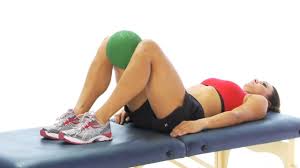
Goal: The inner thigh muscles are the focus of the adductor ball squeeze. The adductors are a group of muscles that are crucial for hip and lower extremity stability throughout a variety of daily tasks.
You can use a cushion or Pilates ring in place of a ball if you don’t have one that fits between your knees.
Enhancing the surrounding hamstring muscles will help the hamstrings perform better and prevent overuse in the future. The muscles on the inside of the thigh, known as the hip adductors, can be strengthened by ball squeezes.
How to carry it out: Lay flat on your back and bend your knees. Put a folded cushion or ball between your knees. Take a few seconds to squeeze into the ball or folded cushion.
For three minutes, repeat while remaining relaxed.
Advice: Since this is an isometric workout, there won’t be any significant movement while you tense your muscles. Make certain that you are pressing equally with both legs to do this. You should feel activation from the inner thigh muscles; avoid holding your breath or tensing your neck and shoulders.
Using a theraband abduct the hips
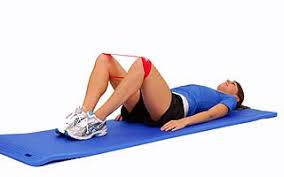
Your glutes will become stronger as a result of this workout, enabling them to support your hamstrings and guard against future strains on your muscles.
The technique is to lay on your back with your knees bent. Encircle your knees with the TheraBand so that there is no room for slack. Maintaining your feet together, pull your knees apart. Return to the starting position slowly. Do it again for 3 minutes.
Upright hamstring curls
The muscles involved are the hamstring (back of the leg) and gluteal (buttock).
How to act: Standing erect, your knees should only be separated by one or two inches. Grab onto the countertop, a strong chair, or something else for balance.
Slowly bend one knee behind the body while keeping the thighs parallel and lifting the heel off the floor. Lift the heel easily until the knee reaches a ninety-degree angle. Maintain a slight bend in the straight leg to avoid locking.
Carefully lower the bent leg to the ground after five seconds of elevation.
Repeat twice more with the same leg.
Switch sides and continue.
How not to behave: Refrain from pointing your toes up or flexing your foot. Allow the foot to remain in a level, neutral position.
Stretching your hamstrings while standing
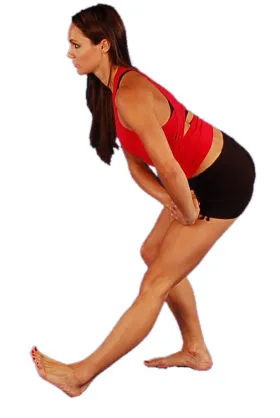
In extra to being slightly stressful on your lower back rather than toe touches, stretching your hamstrings while standing is a wonderful path to relax up the backs of your legs.
How to behave: Stand with your feet shoulder-width apart and maintain a straight stance.
Folding lightly at the hips, extend the right leg a few inches in front of the body. give grant the left leg to gradually bend.
Reduce your chest gradually while keeping your back straight.
As down as you are ready to curve without attempting injury. Enjoy a 30-second respite.
After carefully transferring the leg surround the body, stand up straight.
Proceed with the other leg.
Bending forward while standing
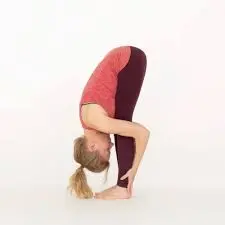
A standing hamstring stretch tones the hamstrings at the back of the thighs. The standing hamstring stretch can help you become more flexible, release tight muscles, and lessen knee pain.
How to do it: As you stand behind a yoga block or exercise step, maintain good posture.
With your toes pointing upward and your right leg lifted, plant your heel on the step. Set your right knee straight.
curve from the hips and lift your arms straight up while bending toward your right leg.
As you maintain the position for 20 to 30 seconds, feel the stretch in your right hamstring.
To the left, switch sides.
Repeat 2–4 times on each side.
Hurdler hamstring stretch
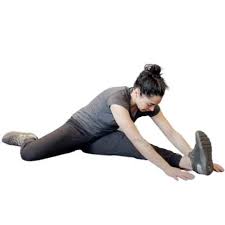
Tip: Bend forward from the waist while maintaining a relaxed shoulder and neck.
Procedure: The hurdler hamstring stretch is a floor-based exercise that is easy to perform.
With one leg extended outwards, take a seat on the floor.
Place the sole of the second foot against the inside thigh of the other leg and bend it at the knee.
flex as much at the waist as you can to stretch forward over the straight leg and extend your arms.
For ten seconds, maintain this posture.
Unfold.
Continue with the opposite leg. execute 3 reps with hold 7 second
One-leg standing hamstring stretch
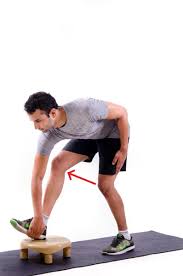
Tips: flex one heel on a book or stool while bending slightly forward from the hips.
Among the simplest stretches is the standing, one-legged hamstring stretch. Perform it outside, in your office, or at home.
how to accomplish: Place one heel on a stool, yoga block, or small pile of books to support your upright posture. You can utilize the curb if you’re outside, but keep an eye out for oncoming traffic.
Maintain a straight knee.
Raise both arms until they are almost level with your ears. You can maintain a straight back by reaching upward with your arms rather than downward toward your foot.
From your hips, slant slightly forward. Your hamstring behind your thigh should feel stretched.
Practice three times, holding the stretch for 15 to 30 seconds each time.
Continue with the opposite leg.
Hamstring stretch with towel

Tip: As you carefully remove the towel, maintain a straight back, a downturned shoulder, and an angle away from your ears.
To execute towel stretches, most people have towels on hand, but you can also use a strap or belt.
How to accomplish: Lay down on your back on the ground.
Grasp the ends of a lengthy bath towel with both hands while encircling your toes.
Pull on the towel slowly to raise your straight leg. Make sure your knee remains straight. The leg that isn’t covered by a towel needs to stay level with the floor.
Obtain your leg upward til a stretch is felt behind your thigh.
After 15 to 30 seconds of holding, release tension.
On every leg, repeat three to five times.
Hamstring stretches with foam rolls
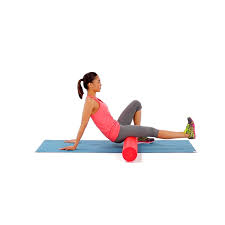
Procedure: With your legs out in front of you, take a seat on the floor.
Fold the opposite leg, keeping the foot flat on the ground, and place the foam roll flat beneath the hamstring of one leg.
With your hands flat on the floor, raise the buttocks off the mat while keeping your balance.
Make lengthy, sweeping motions with the body back and forth, stopping short of the back of the knee.
To confirm that the roller surrounds the right, left, and middle hamstring muscles, slightly twist the thigh.
do again the stretch with the other leg.
As you perform the exercise, keep in mind that the towel hamstring stretch should feel wonderful; if it hurts, stop right away and try something else.
The Leg Press
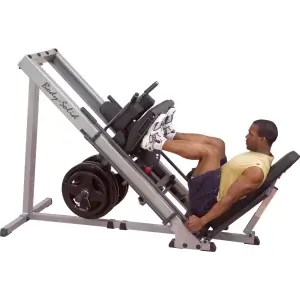
The primary muscles used were the quadriceps and hamstrings.
Your front hip and the front and back of your thighs should feel the effects of this workout.
Tools needed: For this workout, an elastic stretch band with a comfortable resistance works well. As the workout becomes easier, gradually increase the resistance level. Leg press workouts should not be performed with ankle weights. If you have access to a fitness center, you can also perform this exercise on a weight machine. A fitness assistant at your gym can provide you with operating instructions for the machines in a safe manner.
2 sets of 10 repetitions, 3 to 4 times a week
Detail instructions: Place the middle of the elastic band at the arch of your foot by grasping the ends with both hands. As you lie on the floor, bend your elbows.
You can bring your knee closer to your chest by pulling the thigh muscle in the affected leg taut.
Flex your foot and slowly straighten your leg in front of you while applying pressure to the elastic band.
Hold this position for two seconds. Lower your leg to the floor while bending back. Repeat.8–10 repetitions two daily sessions
Advice: Throughout the workout, keep your abdominal area tight.
Hamstring stretches while standing on a table
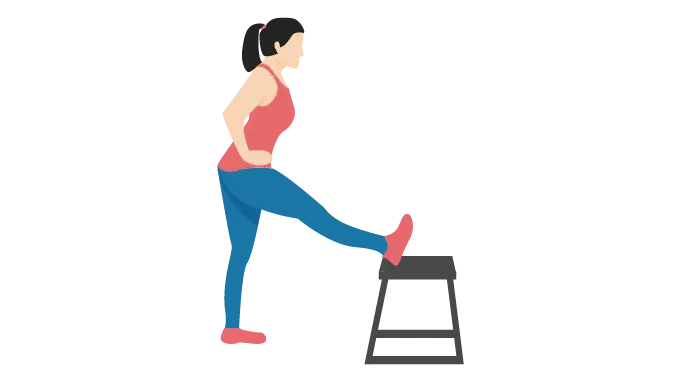
Procedure: Look for a table that is the exact length of your hips.
Maintain an erect posture and a neutral spine.
With the foot bent so that the toes point upward, place the right leg on the table. Just the foot and a portion of the calf should rest on the table as you stand far enough away from it.
Once the hamstring muscle stretches, bend forward at the waist.
Bend forward a little, supporting yourself with your hands on the table or leg, to intensify the stretch.
For an utmost of 30 seconds, preserve the stretch.
Repeat three times on each leg, pausing for fifteen seconds in between.
Hamstring stretches while seated in a chair
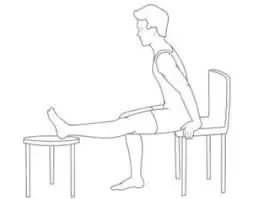
Procedure: Sit on a chair with your back straight and close to the edge of the seat.
Don’t take your foot off the ground.
Place the other leg on a chair and extend it out in front of you.
flex the trunk forward gradually until the back of the thigh is stretched.
Make sure the shoulders don’t sag forward and the spine is in the correct position.
Stretch for ten to thirty seconds.
Change your legs. Repeat each leg two to four times.
Stretching your hamstrings while sitting
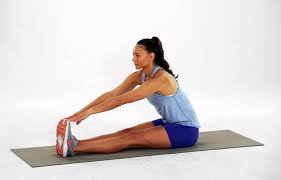
Procedure: Sit on the ground with your left leg bent at the knee and your foot facing inward to extend your right leg. We refer to this as the butterfly position.
Stretch out your right leg while bending it slightly at the knee.
While bending forward at the waist, be sure to maintain a straight back.
Stretch for ten to thirty seconds.
Change your legs. Practice each leg two to three times.
Lying hamstring stretch using a wall
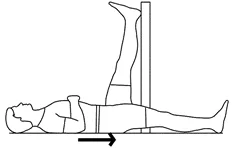
Procedure: Look for an open door or wall.
With your left leg completely stretched on the floor and your back flat, take a flat position on the ground or a mat. The left leg must fit via the beginning of the door.
The right leg should be leaned on the wall close to the door.
To create a slight stress in the right leg, change the distance between the body and the wall.
Stretch for ten to thirty seconds.
Change your legs. On each leg, repeat three times.
The Advantages of healing a hamstring injury
The muscle group that is responsible for bending or flexing the knee is the hamstring, which is situated in the rear of the thigh. Running and walking require the hamstrings to aid the gluteal (butt) muscles to stretch the leg since they also cross the hip joint in the rear of the thigh.
Stretching your hamstrings can increase flexibility, assist cure low back pain, and avoid injury, however, its efficacy is occasionally denied. Stretching can reduce delayed-onset muscular soreness (DOMS) after intensive activity and increase general mobility, both of which can benefit athletic performance and day-to-day activities. Another effective technique for momentarily relieving tense muscles and increasing flexibility is to use a foam roller.
It’s also critical to remember that flattening your lower back’s natural arch and pulling on your pelvis are two effects of persistently tensed hamstrings. This causes overstretching and weakening of the muscles, which leads to lower back pain. However, studies have shown that stretching your hamstrings correctly can both reduce and avoid back pain. See a healthcare professional if you’ve tried stretching your hamstrings but are still experiencing tightness or soreness. They can assess your symptoms and provide a plan of care. They could also suggest that you see a physical therapist so they can teach you how to strengthen your hamstrings.
Nutrition and Diet
One of the most difficult aspects of recovering from a hamstring injury is diet and nutrition. you must take a long break before returning to work. If so, you have to give your nutrition plan a thorough review to make sure you’re getting enough nutrients to promote recovery.
It’s critical to nourish your body with wholesome nutrients, like fruits and vegetables, at this period. Your body needs nutrients to heal itself quickly. Meals high in protein and high in vitamins which are critical to your recovery. Also, drinking lots of water would help because dehydration can hinder your progress.
Supplements and Vitamins
During recovery, vitamins and supplements are often utilized to provide your body with all the nutrients it needs to repair. The main components to aid in the healing process after an accident are extra protein and vitamins A and C. The building block of protein is what gives your muscles the ability to repair and get stronger. Natural anti-inflammatory vitamins include A and C. Collagen repair is essential for strong tendons.
Herbs and medications in bowls and cups. But it’s also crucial to see a healthcare provider before taking any more vitamins or supplements. Vitamin excess or interactions with certain drugs are possible while using supplements and vitamins.
Surgery is uncommon and should only be performed if your hamstring is torn from its bone.
Resuming Activity
Once your pain has sufficiently subsided, you can start doing some light stretching and exercise. Verify with your provider. Accelerate your physical activity rhythmically, such as walking. Adhere to the exercises prescribed by your physician. You can increase the number of stretches and exercises as your hamstring strengthens and heals.
Be careful not to exert too much or too quickly. It’s possible for a hamstring strain to flare up again or to rip.
Consult your physician before starting any physical activity again or going back to work. Resuming regular activities too soon runs the risk of re-injury.
Avoidance
There’s always a chance that you could hurt your hamstring if you run or climb. It is doubtful to ensue if you:
Before exercising, spend at least ten minutes warming up your body.
Run, do not run.
Perform simple calisthenics.
Spend three to five minutes before and after a sporting event performing stretches and flex exercises.
Keep up a solid exercise and strength regimen.
Consume a diet rich in variety.
Two or three times a week, engage in strengthening activities. Exercises using only your body weight, such as lunges and squats, are effective. Strengthening your hamstrings and supporting muscles, such as your glutes and abdominals, can also be achieved with single-leg bridges. or these, you lie on your back with your knees bent, the sole of your foot flat on the ground, and your arms by your sides of the body, You elevate your hips as high as you can comfortably while extending one leg. After that, squat down with your leg and hips and repeat the movement with the other leg.
Gradually introduce more strenuous activities. Don’t try to run a 5K in a few days after starting to walk.
Don’t go excessive. When you are fatigued, stop—don’t push it aside. Your muscles are more weak to injury when you strain them to the limit.
What inquiries could a medical professional make to detect a hamstring injury?
Being ready to respond to inquiries from your healthcare practitioner is beneficial. Among the possible inquiries are:
Which symptoms are you feeling?
Do you feel pain?
Where exactly is the pain?
When was the injury sustained?
When you got hurt, what were you doing?
Which drugs do you take?
When would you visit your medical professional?
Perhaps all you need to do is recover from your hamstring injury at home. Nonetheless, you ought to visit your doctor if:
It’s a serious injury.
Your illnesses get worse.
Your wound isn’t getting better.
Your leg feels tingling or numb all of a sudden.
Unexpectedly, the edema increases.
What inquiries regarding the hamstring issue do you ask the healthcare provider?
What level of hamstring strain should you experience?
Which method of activity is best for you?
Which painkillers are most effective?
Should you consult a specialist?
How should you tell if the hamstring is hurt?
The most common cause of acute pain and sensitivity in the back of the leg is mild hamstring strains grade 1. Your leg may hurt to move, but this shouldn’t have an impact on the muscle’s strength.
Grade 2 partial hamstring injuries are typically more sensitive and painful. In addition, there can be some bruising and swelling at the rear of your thigh, and your leg might no longer be as strong.
Walking and standing might be challenging due to severe hamstring tears(grade 3), which are typically extremely painful, tender, swollen, and bruised. When the accident occurred, there might have been a “popping” sound, and you won’t be able to use the leg that was hurt.
Summary
To prevent reinjury, it’s critical to pay attention to your body’s healing needs and not rush the process. For a correct diagnosis and treatment plan, it is urgent to visit a healthcare professional if the injury is severe or does not improve with self-care techniques.
Your leg can flex and stretch more easily because of the collection of tendons and muscles in the rear of your thigh. If hurt, there might be bruises and swelling in addition to moderate to severe pain. Start at-home therapies cautiously at first, paying close attention to your doctor’s advice. Even though your recovery time could range from a few days to several months, you should take precautions to avoid suffering another hamstring injury.
Take your time recovering. Paying close attention to your healing process might shorten the recovery period from hamstring strains and prevent further injury. By following the suggested healing stages, you can resume your favorite activities without experiencing more pain
FAQs
should an injury to the hamstring go away by itself?
No. Your recovery strategy must be attached to it. Exercise avoidance for a prolonged period should cause your hamstring muscles to weaken. Scar tissue might also be present.
What is the prognosis for those suffering from hamstring strains?
The future looks quite promising. It should take a few days, weeks, or months at most for you to recover.
When should you start working out again?
Observe the exercise advice advised by your healthcare provider. Stretching very gently should come first, followed by walking or cycling and strengthening activities.
should anyone re-injure their hamstring?
Failure to appropriately treat and allow a mildly strained hamstring to heal can lead to further strains in the same area.
A hamstring injury: what is it?
A pull or incision(hamstring strain) in the group of muscles and tendons in the rear of the thigh is comprehended as a hamstring injury. It’s one of the most dominant and complicated conditions, primarily affecting athletes.
What does a hamstring do? How does it typically operate?
The largest muscle in your leg is connected to your bone by the hamstring. Your hamstrings’ primary function is to enable your leg’s flexion (bend) and extension (stretch). Your hamstrings are most used when you run, jump, sprint, climb, lunge, or stretch too far.
Who is most likely to sustain a hamstring injury?
athletes, particularly those who lunge, climb, and jump. If you’ve previously suffered from a hamstring injury, you’re also more likely to get one now.
Do hamstring strains cause pain?
Absolutely. Your thigh pain could start suddenly.
Is it possible for hamstring injury treatment to cause complications?
Recognize that if you perform your stretches and exercises too quickly, you run the risk of further hurting yourself. When it is safe to resume your regular activities, go cautiously and consult your healthcare provider.
When You have a hamstring injury, how should You sleep?
Regarding hamstring injuries, there are no specific sleeping positions that are beneficial. Wearing your compression wrap or elastic thigh sleeve is advised, though.
When will you feel better following treatment? How much time does recovery take?
It all depends on how bad your injury is and how long it will take you to heal. About three days may pass for a grade 1 strain. Students in grades two and three might bring weeks to months
Who is most susceptible to strained hamstrings?
The most common link between hamstring rips and strains and sports is physical activity. That being said, nothing that follows should be shocking. However, high school, collegiate, and professional players do appear to be the sports where hamstring injuries occur most frequently. A higher incidence rate is seen in athletes who participate in track and field, football, and soccer. those who have suffered hamstring injuries in the past.
Can a hamstring injury prevent you from enjoying a regular life?
Sure, but there will be restrictions. You might not be able to perform your regular exercises and could need crutches to walk. However, you ought to be able to carry on with other pursuits and preserve your standard of living.
What time is best for you to visit the emergency room?
Go to the emergency room without delay if you believe your injury is so serious that you cannot wait to see your primary care physician. The probability that your hamstring has truly come away from your bone does not go away.
References
- Hamstring strain – aftercare. (n.d.). Mount Sinai Health System. https://www.mountsinai.org/health-library/selfcare-instructions/hamstring-strain-aftercare
- Professional, C. C. M. (n.d.). Hamstring Injury. Cleveland Clinic. https://my.clevelandclinic.org/health/diseases/17039-hamstring-injury
- Hamstring injury – Diagnosis and treatment – Mayo Clinic. (2022, December 9). https://www.mayoclinic.org/diseases-conditions/hamstring-injury/diagnosis-treatment/drc-20372990
- Pta, K. B. (2024, January 19). Hamstring Strain Exercises to Heal a Strain FAST! Petersen Physical Therapy. https://petersenpt.com/hamstring-strain-exercises-to-heal-a-strain-fast
- Heiden, E. (2024, February 17). How to Heal a Hamstring Strain Fast – Heiden Orthopedics. Heiden Orthopedics. https://heidenortho.com/heal-hamstring-strain-fast/
- S. (2023, July 3). How To Speed Up Pulled Hamstring Recovery Time. Drip Hydration – IV Therapy & Medical Wellness. https://driphydration.com/blog/pulled-hamstring-recovery-tips/
- Website, N. (2024, February 20). Hamstring injury. nhs. uk. https://www.nhs.uk/conditions/hamstring-injury/
- Schreiter, R. (2023, August 15). 5 Things to Know About Hamstring Strains. Temple Health. https://www.templehealth.org/about/blog/recovering-from-pulled-hamstring
- Eske, J. (2024, January 19). What are the best stretches for tight hamstrings? https://www.medicalnewstoday.com/articles/323703

